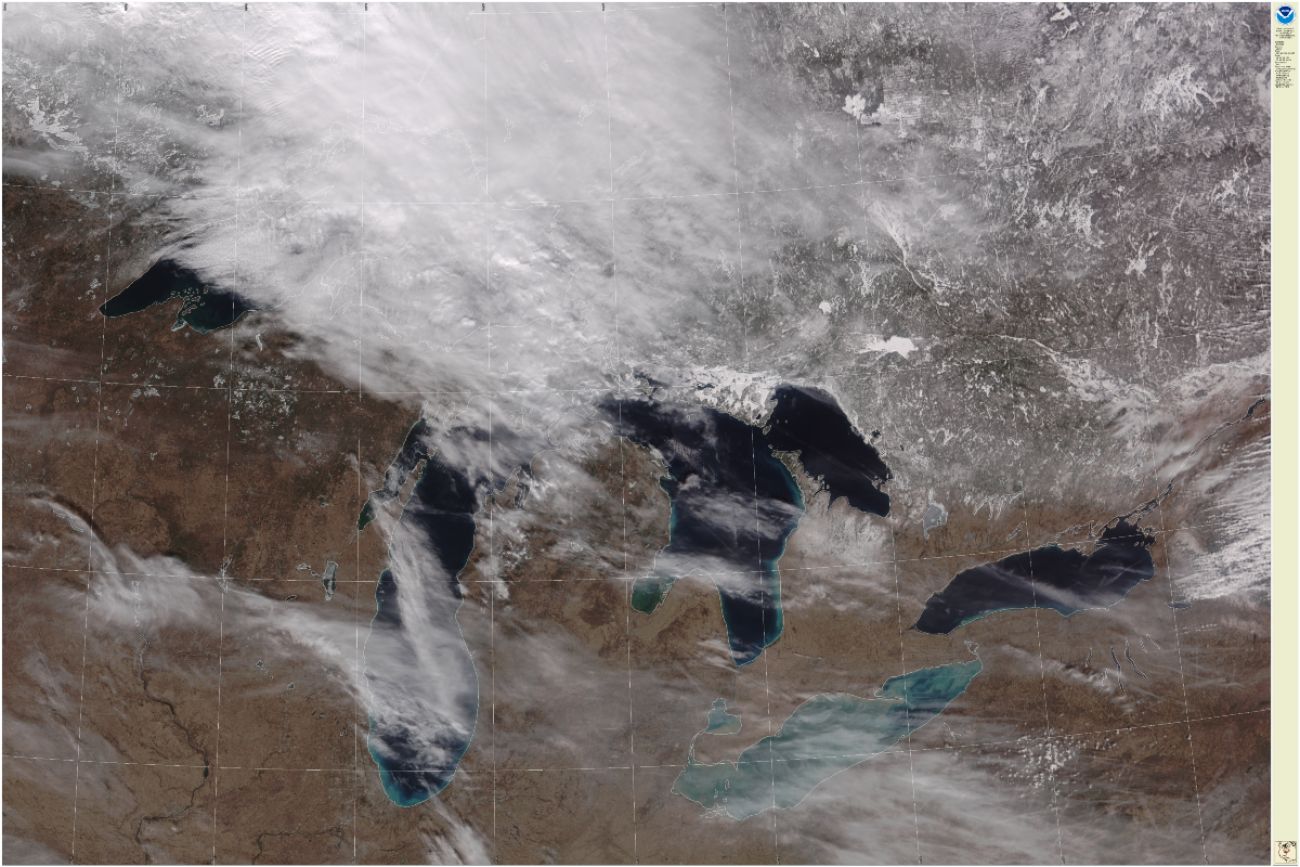Michigan climate change: How fish, forests, farms, moose, ticks will change

- Michigan’s winters are disappearing as climate change heats the globe
- That will bring a host of changes, from lost traditions and shifting growing seasons to disappearing forests and fish
- If fossil fuel use continues unabated, temperatures could rise another 6.5 degrees by midcentury
As climate change heats the globe, northern winters are disappearing.
That isn’t exactly news — parts of Michigan flirted with 70 degrees on Tuesday.
By midcentury, experts predict, much of the state will swap snow and ice for rain and mud in winter. Say goodbye to pond hockey season. Expect frequent cancellations of snowmobile jamborees and ice fishing derbies, until snow and ice become so unreliable that those traditions won’t be worth planning at all.
Richard Rood, a professor emeritus of climate and space sciences and engineering at the University of Michigan, refers to it as “warming winter syndrome.”
“It’s just systematically getting warmer, and the warming has really accelerated the last 20 years,” Rood said.
On Monday, Bridge Michigan examined how losing winter threatens the very notion of what it means to be a Michigander.
But the fallout will be widespread and multi-faceted, touching nearly every aspect of life.
Here are a few examples:
January rain
By midcentury, the average winter across much of Michigan may look similar to the winter of 2024: Far warmer than historic averages, with paltry snow that melts quickly.
Long-term temperature and ice records show our winters have been gradually warming for decades now. But it’s become more visible because temperatures are now regularly crossing the freezing line, Rood said.
By 2050, he expects snow in Detroit to be a rarity. Up North may get more snow, but it will melt quickly
Related:
- Michigan residents mourn loss of snow, fear for future as winters vanish
- Climate change is erasing Michigan winters, taking our heritage with them
- Under current climate trends, Michigan’s Up North forests could be doomed
- In warming Great Lakes, climate triage means some cold waters won’t be saved
Ice on the Great Lakes will get thinner, while inland lakes may fail to freeze over at all. Already, Great Lakes ice cover is declining at a rate of 5% per decade.
Experts say in the near term, a lack of ice in the Great Lakes may lead to more lake-effect storms. But increasingly, they’ll pummel Michigan with rain instead of snow.
February daffodils, disappearing firs
The warm-up is already shifting growing seasons.
In November, the U.S. Department of Agriculture released a new plant hardiness zone map, the guide that helps gardeners decide when to plant crops. The new map shifts most of the country up a half-zone.
By midcentury, Rood said, crocuses and daffodils will be a common February sight in Michigan.
The changes have major implications for farmers, who rely on predictable seasons to sustain their crops. Fruit tree farmers are particularly at-risk when warm winters cause blossoms to open early, only to be killed off by a sudden freeze.
Forests are also at risk. If society doesn’t move faster to ditch fossil fuels, scientists predict the boreal tree species that define “Up North” will be goners. Some people are trying to get ahead of those changes by planting southern trees in Michigan’s northern forests.
Trouble for tourism
Winter tourism is an economic lifeline for many rural northern Michigan communities, which have few other major industries.
Tom Nemacheck, executive director of the Upper Peninsula Travel & Recreation Association, said he fears for the U.P.’s economic future as snow and ice dwindle.
“If this winter is not a wake-up call,” he said, “I don’t know what you want.”
On a given winter, Nemacheck said U.P. visitors would spend around $180 million on lodging, food, entertainment and supplies. This year, he expects 20 percent or less of that.
Many hotels have laid off their staff and closed for the season. A series of consecutive bad winters could lead to permanent closures.
Long-term, experts said, operating a ski hill in southern Michigan probably won’t pencil out. Artificial snow cannons aren’t much use when temperatures are so warm that the snow melts on contact.
Disappearing moose
The shift in ecosystems is an existential risk for some of Michigan’s most iconic species.
Moose, for example, are susceptible to deadly ticks and brain worms that thrive in milder winters. Snowshoe hares, which turn white as a form of winter camouflage, stick out like a sore thumb when there’s no snow.
New research even shows that lake ice loss is hindering walleye reproduction. Combine climate change with invasive species like quagga mussels, and whitefish are already on the brink of collapse.
Mild winters cause rivers to heat up faster in the summer, too. That’s a threat to coldwater species like salmon and trout, and it has already forced government officials to start picking winners and losers.
Invisible changes
Equally concerning are the invisible changes happening underwater or underground.
For instance, scientists hypothesize that declining snowpack could compromise the soil nutrient cycle, making it harder for plants to grow.
And rising temperatures deep in the Great Lakes could disrupt their twice-annual “turnovers,” in which surface water mixes with deep water. That could lead to more toxic algae blooms, while depriving deepwater fish of the oxygen they need to survive.
And of course, shorter, warmer winters also means longer, hotter summers. That’s a health risk for outdoor workers and people without air conditioning. It increases the odds of wildfires and algae blooms, lengthens allergy season and creates ideal conditions for disease-carrying mosquitoes and ticks.
Humans control the thermostat
How severe will the warming get? That depends how quickly society swaps fossil fuels for energy sources that don’t emit greenhouse gasses.
If we don’t make any changes, models show average temperatures in Michigan could rise another 6.5 degrees by midcentury. Ditching fossil fuels faster would slow the warming.
Despite the looming losses, Michigan is considered a “climate haven,” where the destruction caused by climate change will be less severe. People living in equatorial climates, along ocean coastlines, or in arid landscapes are expected to see even more dramatic, potentially deadly changes.
“There are billions of people who live in areas where it's going to be too warm for humans to survive,” said Sapna Sharma, a climate expert and professor in the biology department at York University in Ontario. “And this might happen sooner than we expected.”
Michigan Environment Watch
Michigan Environment Watch examines how public policy, industry, and other factors interact with the state’s trove of natural resources.
- See full coverage
- Subscribe
- Share tips and questions with Bridge environment reporter Kelly House
Michigan Environment Watch is made possible by generous financial support from:
Our generous Environment Watch underwriters encourage Bridge Michigan readers to also support civic journalism by becoming Bridge members. Please consider joining today.
See what new members are saying about why they donated to Bridge Michigan:
- “In order for this information to be accurate and unbiased it must be underwritten by its readers, not by special interests.” - Larry S.
- “Not many other media sources report on the topics Bridge does.” - Susan B.
- “Your journalism is outstanding and rare these days.” - Mark S.
If you want to ensure the future of nonpartisan, nonprofit Michigan journalism, please become a member today. You, too, will be asked why you donated and maybe we'll feature your quote next time!






